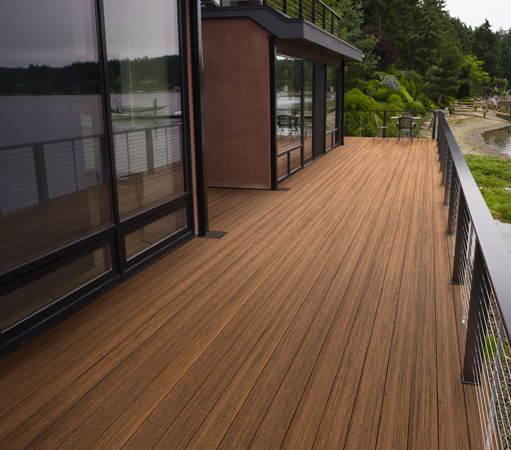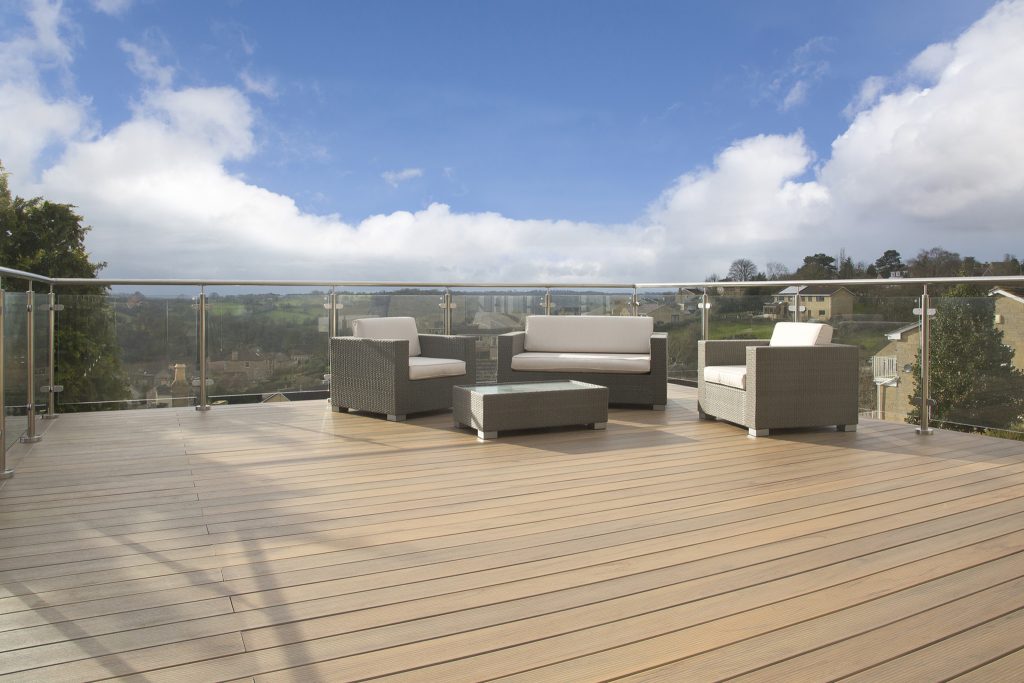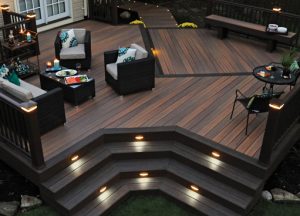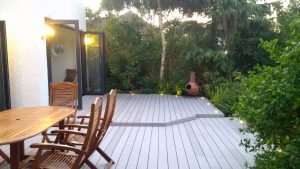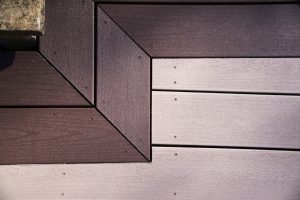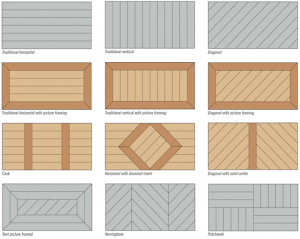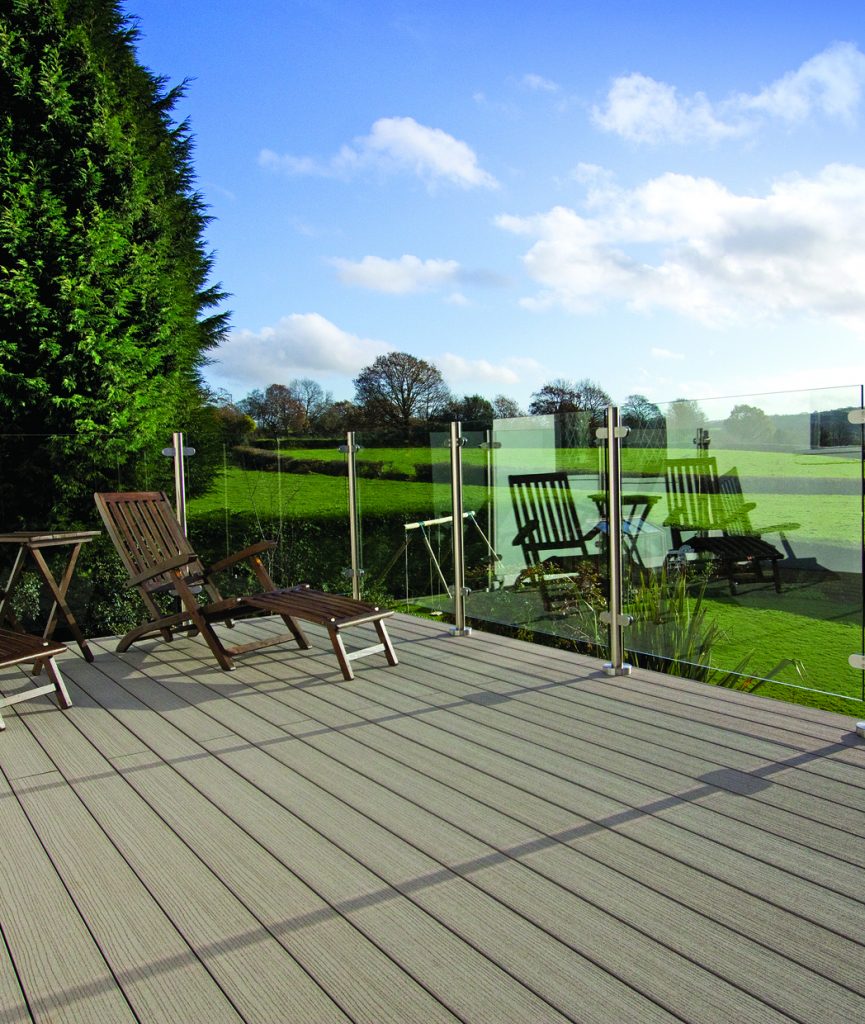Although homeowners have come to appreciate the extra outdoor space that wooden decking provides, not everyone knows about some of the latest technology such as composite decking. Here, we look at some recent advances, new products and special fixtures for that perfect garden decking appearance.
Composite decking is ideal to make the most of sunny days or even just bright intervals. Available in a choice of finishes, the boards are made from sustainable reclaimed natural wood mixed with synthetic cellulose based material such as polyethylene. This gives a much more authentic and attractive result than plastic decking and is not prone to cracking or bowing. Additionally, the boards last significantly longer than untreated wood; there are no problems with rot, splinters or warping. Composite decking is durable, as well as resistant to fading and surface scratches. This solution offers the charm of a fine timber appearance with a longer life span. In the long term, it is cheaper than untreated wood.
Capped composite decking technology goes one step further, with a coating of polymer resin to give highly durable decking boards which are designed to really last. The slip-resistant surfaces are suitable for small or large projects and no wood oil, sealant or paint is needed. The polymer sleeve keeps the board safe from liquid spillages and stains; it can also be wiped or mopped clean instantly, making this decking solution perfect for exterior eating or dining areas. Boards are available in a wide choice of colours. Gray is proving to be one of the most popular in the decking marketplace. A New Company called Eco composite decking say this is their best selling colour.
You can also find more information on amazon about this company
When choosing a supplier or brand, it is useful to have an insight into the manufacturing process. A good supplier will use clean, sustainable sources of hardwood for a natural looking, quality result. Completely enclosed boards are better than cheaper alternatives that leave the sides or underneath surface exposed and, therefore, prone to moisture and deterioration. In addition, the best products are fully recyclable at the end of their long life.
However, it is not only decking boards that have benefited from the latest material and manufacturing technology; decking fixtures have seen advances too. Hidden fasteners hold the decking together for a showcase appearance and are suitable for use with grooved boards. Convenient bulk fixing packs are ideal for covering a given area; they come with colour matched and specially designed screws, which are designed to avoid any mushrooming distortion effect on the wood. Selected fastenings are manufactured from zinc phosphate and specially treated with a coating to prevent corrosion and discolouration, with a lubricated top coat for easy installation. Then, for that final touch, other options include edging boards, rubber shoes and polymer posts as well as special landscaping fabric to prevent weed growth, yet which allows moisture and air to pass through.
In summary, the latest technology in composite decking offers an attractive appearance, super durability and very low maintenance costs and minimal effort. Benefits include maximum return and extra useful extra outdoor space. There are now more reasons than ever to go ahead this autumn. Enjoy updated decking this season!
For further information on capped composite decking click here.
If you are looking to construct a road to your house you will need to analyse the ground, to assess how deep the foundations will need to be. This test is called a CBR Test or The California bearing ratio and is a penetration test. For further information on cbr testing see this article on what is cbr testing and plate bearing test.
The material you select for the road could be concrete or asphalt or there are a new range of plastic road surfaces.



